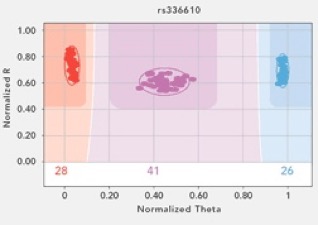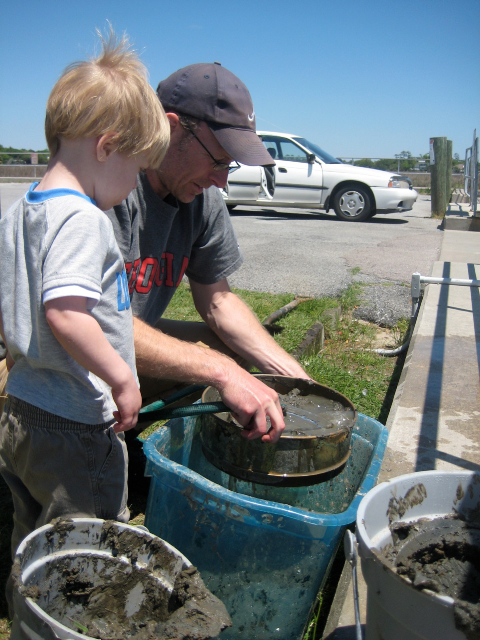Technology

This week has been a good one in the Wares Lab, not least of which because a huge financial gamble has paid off, and is a great indicator of how population genetics and phylogeography is changing. I received some funding from the University of Georgia Research Foundation, intended for junior faculty to generate preliminary data for bigger fish (NSF, NIH) proposals. The entire goal of the award was to try out the Illumina Golden Gate genotyping technology with the Streblospio transcriptome that Christina Zakas is working with. We nervously sorted and re-checked the SNPs in the data, and weeded it out to a set of about 200 that we hoped would be applicable ... and more importantly, scorable. This species has been really recalcitrant when it comes to successful PCR. Fortunately, the Illumina technology doesn’t really go through PCR to get its genotype! In the end, 96 loci were chosen and the array was developed (again, at a big cost for a technology that we’ve never worked with or even seen worked with around here, on a species that we couldn’t even reliably amplify mitochondrial genes).
The data started rolling in this week, and it is phenomenal. Of course some of the loci don’t work well - but around 80% do, which is a better fraction than I’ve ever had when developing primers for nuclear loci in these non-model critters previously. And some DNA templates are not great quality, but close to 95% appear to be just fine. This puts us in position to suddenly be studying these tiny squishy mud worms at a global scale with 2 orders of magnitude more data than ever before. Money well spent, and we’ll be using the same technology on upcoming projects.
Worms

A little proof that I do escape from behind my monitor from time to time. Two weeks ago, I was out at Sapelo Island to visit our Georgia Coastal Ecosystems sites in hopes of finding Streblospio benedicti for my student (Christina Zakas). My field assistant mostly liked to help with the hose and mud. The procedure for finding these critters gives lie to the phrase “find ‘em and grind ‘em” as applied to phylogeography. The problem is that people have come to assume such studies are as simple as driving to an area, scooping up an organism, and then squeezing DNA out of it. Truth is - and its good to be reminded myself when I’m reviewing papers for journals - small sample sizes often result from organisms that are very hard to find, have nasty associated chemistry that inhibits PCR, and/or organisms that are threatened (and thus rare, though we want the data ever so much more).
A week later, I got to touch the Pacific as well. I just got back from an NSF workshop on “Evolution and Climate Change in the Oceans”. Phenomenal group of scientists, very high-level discussion and ideas, a lot of fun - and a good excuse to spend a few days on Santa Catalina Island, off the coast from Los Angeles. My only regret is forgetting to bring running shoes, after several days of travel and meetings I feel pretty sluggish.